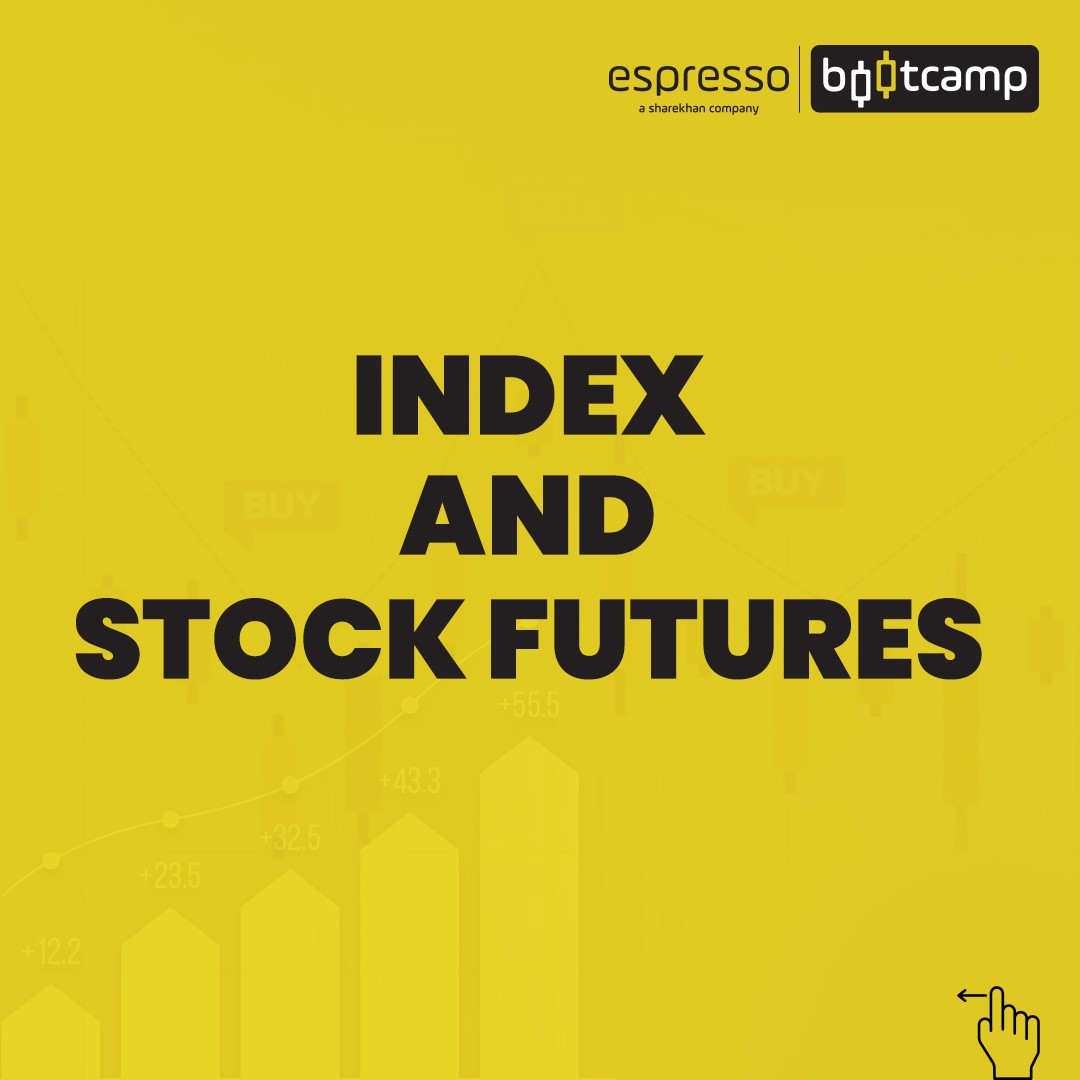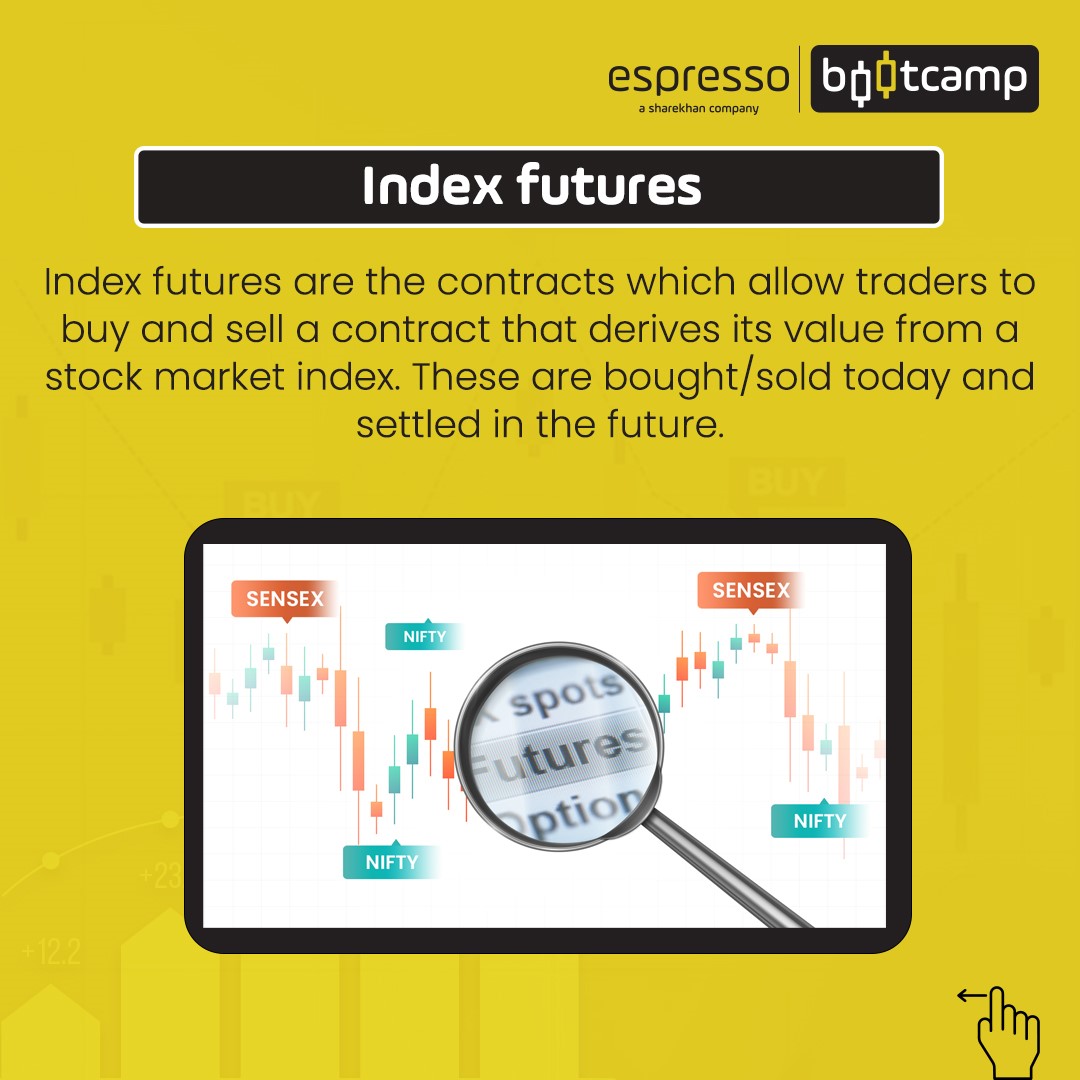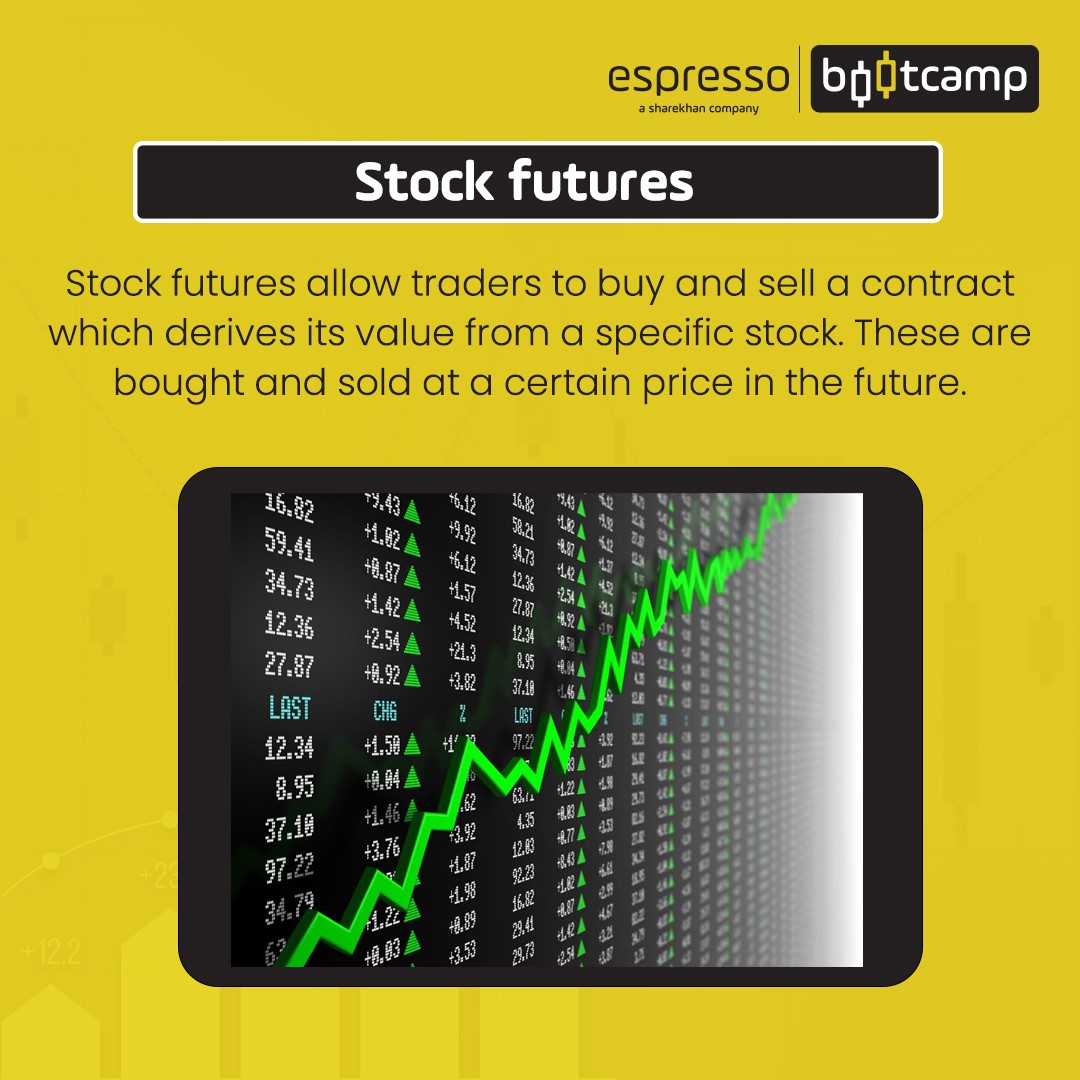Before we understand stock and index futures, let’s review the term ‘future’. Future is defined as something that is likely to happen or will happen at a later time. In finance, futures are derivative instruments that make it compulsory for a party to buy or sell an asset in the future at a predetermined price. Let’s look at it deeper:



Futures are derivative instruments
Derivative instruments derive their value from an underlying asset. So, futures derive their value from an underlying asset. The assets can be gold, rice, wheat, or stocks. Let us take an example:
1. Imagine a newspaper that costs Rs 5. It derives its pricing power from the value attached to it by its readers after being subsidised by advertising revenue. This price will also reflect the price of newsprint. If the cost of raw materials goes up, the newspaper price will also likely go up.
2. Now imagine an agreement where a futures contract has been drawn up. This contract will derive its value from the price of the underlying asset.
Now, let us look at a stock futures contract to understand better how this works. Imagine you think the prospect for a stock has been worsening. You don’t own the stock, but you want to try and make a profit from this outlook of yours.
Ordinarily, in the normal equity market, the most you can do about a negative view is prevent a loss if you own a stock (by selling it). The actual profit you can make from such a view is zero. That is unless you are dealing in the futures market.
If we look at the second half of the definition, it says, “compulsory for a party to buy or sell an asset in the future at a predetermined price”.
In India, there are three parties to a futures contract — buyer, seller, and SEBI (the counterparty).
- You are the buyer. You have Rs 100,000 to invest in stocks.
- You can either purchase the shares of a company, or you can purchase its futures.
- Assuming this company is Reliance Industries and its share price is Rs 2,500, you can purchase 40 stocks of Reliance. If the share goes up to Rs 3,000, you will gain Rs 500/share, for a total of Rs 20,000.
- OR, you can purchase the futures at Rs 2,650.
Now, here is where things become interesting. Each futures contract consists of a lot size. A lot size simply represents the number of items of a particular asset in that futures contract. For example, imagine you have a contract to buy 10 apples. You sign 100 such contracts. You essentially agreed to buy 1,000 apples. In other words, you signed 100 contracts, having a lot size of 10 apples each.
So, the contract value of the future would be Rs 6,62,500 (Rs 2,650 x Lot size: 250 shares)
Here, you do not have to pay the full contract value to purchase the future. You only need to pay a margin requirement. Suppose, in this case, the margin is 15 percent of the Contract Value, Rs 99,375. By paying Rs 99,375, you purchased the futures of Reliance Industries.
Now, the price of the share goes up to Rs 3,000. Considering that you had purchased a future, your gain would be Rs 500 * 250 shares, for a total gain of Rs 125,000. That is more than a 100 percent return on your investment of 100,000.
But what if the share price had not gone up but gone down, as it did in the example that we saw before? The exact thing will happen, not with the buyer, but with the seller.
Let us say that the share price was Rs 2,500. The seller feels like the share is going to drop. To make money out of this opportunity, he sells a futures contract at Rs 2,650. The share of Reliance Industries drops to Rs 2,350. As we saw before, if the share price falls, the derivative price falls. So, the future contract falls to Rs 2,400. He buys the contract back and earns a profit of Rs 250 * Lot size 250 shares, for a total of Rs 62,500. This is called shorting a stock. By shorting a stock, the investor earns money even when the market falls.
But what if the share price rose? What would the seller do? When the buyer booked a profit of Rs 99,375, the seller had to book a loss of Rs 99,375 simultaneously. What if the seller chose not to book the loss? Well, as we read before, futures make it compulsory to buy or sell an underlying asset at a given date. So, it would be compulsory for the seller to buy 250 shares of Reliance Industries in the market if he had not booked a loss of Rs 99,375. Why would the seller buy shares at a loss?
Take a market where there is a seller and a buyer of apples. The seller has no apples to sell. But he knows that apples are being purchased at a very good rate now, and the rate of apples will fall in three weeks. So, he tells the buyer, “Give me the money and I will deliver the apples to you on this day.” The buyer agrees. Now, the seller was hoping to arrange the apples by buying them for a lower rate, as he assumed the price would fall. But the prices rose, and he could not arrange the apples. But would the buyer be okay with that? Obviously not. So, the seller would be compelled to buy the apples from the market.
Like these apples, the seller sells (shorts) the stock, even when he does not have them, looking to repurchase them at a cheaper rate when prices fall. If the prices do not fall, the seller loses and the buyer gains. If the prices fall, the seller wins, and the buyer pays more for something cheaper.
Benefits of stock futures:
- Cheaper
- Instead of paying the entire amount in cash for the stock, you only pay a fraction of the price (margin)
- Higher returns even with less investment
- If you have less money but are open to more risk exposure, you can earn higher profits while investing the same amount
- Shorting
- We have heard of movies like The Big Short and, in recent times, news about the GameStop stock short. Futures empower you to short a stock, as explained above so that you can make a profit on the negative performance of the stock as well
- Low Commissions
Index Futures
Index futures are very similar to stock futures. They function exactly as stock futures, but the margin requirements are higher as the indices are valued at a higher level. While index futures can be used as an instrument for trading, they are often used for hedging against portfolio losses.
The list of index futures in India is as follows:
• S&P BSE Sensex: 30 underlying securities make up the BSE’s Sensitive Index or Sensex.
• Nifty 50: 50 underlying securities make up the NSE’s Nifty index.
• Nifty IT: Here, shares of information technology (IT) make up the underlying securities. The fortunes of these index futures will depend on the performance of the overall sector.
• Nifty Bank: Bank shares make up this index. So, the manner in which index futures like Nifty Bank futures perform will depend on how well the banks are doing.
• S&P BSE Bankex: These futures consist of banking stocks listed on the Sensex.
• S&P BSE Sensex 50: This index includes 50 stocks instead of the 30 that make up the Sensex.
• S&P BSE Bharat 22 Index: This index is made up of 22 central public sector enterprises (CPSEs).
Index futures are a good instrument to gain access to a particular industry, like banking, without having to analyse and purchase shares of banks carefully. Replicating the index performance can be difficult, but with the help of index futures, you can get exposure to the movements of an index. At the same time, if your portfolio consists of multiple shares from the same industry, you can sell index futures of the industry index and compensate for severe downturns by making profits on these index futures. This is often looked like as insurance for your portfolio, as you do incur certain costs related to the index futures that you sell and then settle at a future date, reducing your overall portfolio gains.
Conclusion
Futures are a high-risk, high-reward instrument that can protect the investor during market downturns but can also significantly damage the portfolio if the market goes against your speculation. However, index futures are heavily used at a professional level, where big fund houses protect their heavy investments against downturns with the help of futures.
Things to remember
- In the world of finance, futures are derivative instruments that make it compulsory for a party to buy or sell an asset in the future at a predetermined price.
- Each stock index futures contract consists of a lot size. A lot size represents the number of items of a particular asset in that futures contract.
- If the price of the underlying rises, traders who have bought the future will make a profit. If the price of the underlying falls, traders who have shorted or sold the future will make a profit.
- Futures are a high-risk, high-reward instrument that can protect investor during market downturns. It can significantly damage the portfolio if the market goes against your speculative view.
 0
|
0
|
 0
0
 Modules
Modules

 Watch
Watch 
